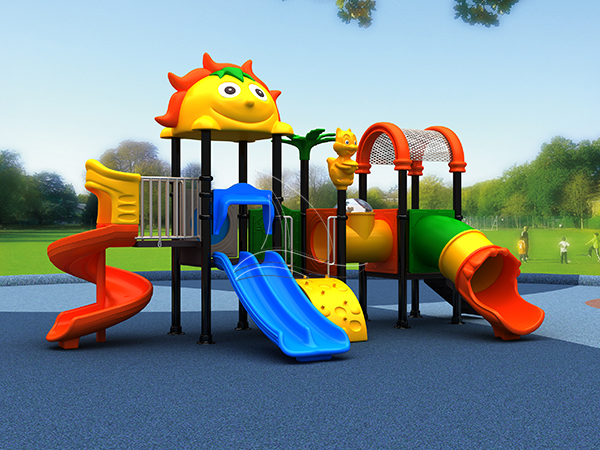Precautions for installing combined slides in kindergartens
Installing combined slides in kindergartens requires careful consideration and adherence to specific precautions to ensure the safety and well-being of children. The following guidelines outline the necessary precautions to be taken during the installation process:

Thorough Planning: Begin by conducting a comprehensive assessment of the available space and the intended location for the combined slide. Consider factors such as the dimensions of the area, accessibility, proximity to other structures or equipment, and the overall layout of the kindergarten playground.
Compliance with Safety Standards: Ensure that the combined slide complies with relevant safety standards and regulations, such as those set by local building codes and safety organizations. This includes aspects like height restrictions, structural integrity, material quality, and the presence of safety features.
Suitable Location: Select an appropriate location for the combined slide installation. It should be easily visible from various points within the playground to allow supervision, yet placed away from other equipment or potential hazards. Take into account factors like even ground, sufficient clearance around the slide, and proper drainage to prevent water accumulation.
Age-Appropriate Design: Consider the age group of the children attending the kindergarten when choosing the combined slide. It should be designed and sized to accommodate their developmental abilities and physical capabilities. The slide’s height, gradient, steps, and handrails must be suitable for the target age group.
Quality and Durability: Prioritize high-quality materials for the combined slide to ensure its longevity and robustness. Opt for weather-resistant materials, such as stainless steel or coated aluminum, to withstand varying climate conditions and prevent rusting or degradation.
Safety Surfacing: Install appropriate safety surfacing around the combined slide to minimize the risk of injuries from falls. Use impact-absorbing materials like rubber mulch, engineered wood fiber, or synthetic surfaces specifically designed for playgrounds. The safety surfacing should extend a sufficient distance in all directions, based on the slide’s height, to provide adequate cushioning.
Clear Instructions and Warnings: Display clear instructions and warnings in multiple languages near the combined slide. These instructions should guide children on how to use the slide safely, including reminders to sit or slide feet-first, not climb up the slide, and not use the slide during adverse weather conditions.
Regular Inspections and Maintenance: Establish a routine maintenance schedule to ensure the combined slide remains in optimal condition. Regularly inspect all components, including the structure, handrails, stairs, and connection points, for signs of wear, damage, or loose parts. Promptly repair or replace any faulty or damaged parts to prevent accidents.
Supervision and Education: Educate kindergarten staff and parents about the safe use of the combined slide. Encourage active supervision during playtime to ensure children follow safety guidelines. Promote a culture of safety and awareness by organizing workshops or training sessions to familiarize adults with potential risks and appropriate responses in case of emergencies.
Regular Risk Assessments: Conduct periodic risk assessments of the playground, including the combined slide, to identify and mitigate potential hazards. Assess the impact of environmental factors, usage patterns, and emerging risks to ensure the continued safety of the children.
By following these precautions, kindergarten administrators and installation teams can create a safe and enjoyable environment for children to play and explore, minimizing the risk of accidents and promoting their overall well-being.


